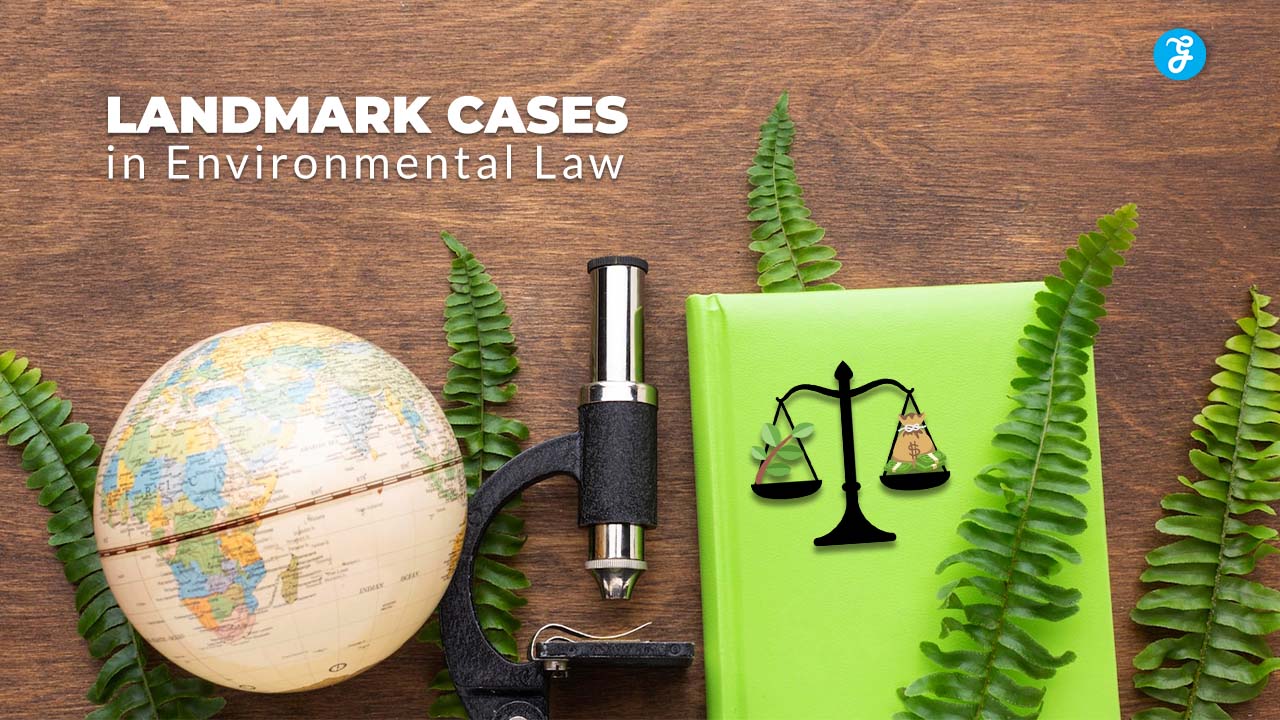Environmental law is a critical field that ensures the protection of natural ecosystems, human health, and the planet’s resources. Over the decades, groundbreaking legal cases have acted as catalysts for global change, holding governments, corporations, and individuals accountable for their environmental impact.
These landmark decisions have not only enforced existing laws but also established new legal doctrines that continue to influence policy-making worldwide.
This article examines 10 of the most influential environmental law cases in history, exploring their outcomes and long-term impacts. These cases demonstrate the power of legal systems in promoting environmental justice and sustainability.
What Are Landmark Cases in Environmental Law?
Landmark cases are pivotal legal decisions that set precedents, influence future litigation, and shape policy. In environmental law, these cases have often addressed critical issues such as pollution, deforestation, climate change, and the exploitation of natural resources. The impact of these rulings transcends borders, inspiring changes in environmental policies and practices globally.
1. Massachusetts v. Environmental Protection Agency (2007)
Established that greenhouse gases are pollutants under the Clean Air Act.
This case began when Massachusetts and several other states sued the Environmental Protection Agency (EPA) for failing to regulate carbon dioxide emissions from motor vehicles. They argued that the EPA’s inaction posed a threat to public health by contributing to climate change.
The U.S. Supreme Court ruled in favor of Massachusetts, concluding that the EPA has the authority to regulate greenhouse gas emissions. The decision compelled the agency to develop policies targeting climate change and underscored the legal responsibility of governments to address environmental crises.
This case set the stage for significant climate change policies, including the Obama administration’s Clean Power Plan. It remains a cornerstone in climate litigation worldwide, influencing similar cases in other countries.
2. Friends of the Earth v. Laidlaw Environmental Services (2000)
Strengthened the ability of citizen groups to sue for environmental violations.
Friends of the Earth sued Laidlaw for repeatedly discharging harmful pollutants into South Carolina’s North Tyger River. While Laidlaw argued that its violations had ceased and the case was moot, the U.S. Supreme Court ruled otherwise.
The court concluded that citizen groups have the right to sue if they can demonstrate harm to the environment or their members’ recreational or aesthetic interests.
This case empowered environmental organizations by affirming their standing to hold corporations accountable for violating environmental laws. It emphasized the role of civil society in environmental protection.
3. Vellore Citizens Welfare Forum v. Union of India (1996)
Introduced the “polluter pays” principle and the “precautionary principle” in Indian environmental jurisprudence.
The Vellore Citizens Welfare Forum brought this case against tanneries in Tamil Nadu, India, which were discharging untreated effluents into rivers. The pollution adversely affected local agriculture, aquatic life, and human health.
The Supreme Court of India ruled that industries causing environmental damage are liable to compensate for the harm. It also required the polluters to adopt sustainable practices.
The principles established in this case—polluter pays and precautionary action—have been integrated into India’s environmental policies and influenced international environmental law.
4. Chevron U.S.A., Inc. v. Natural Resources Defense Council, Inc. (1984)
Introduced the concept of “Chevron deference,” granting agencies leeway in interpreting ambiguous laws.
This case involved a dispute over the Clean Air Act and the EPA’s interpretation of “stationary source” to include entire industrial plants rather than individual units.
The U.S. Supreme Court ruled in favor of Chevron, emphasizing that courts should defer to a regulatory agency’s reasonable interpretation of ambiguous statutes.
The Chevron deference became a foundational principle in U.S. administrative law, influencing how courts evaluate regulatory decisions. It has had significant implications for environmental rule-making.
5. Minors Oposa v. Factoran (1993)
Recognized the concept of intergenerational equity in environmental law.
A group of Filipino children brought this case, arguing that the government’s logging policies violated their constitutional right to a healthy environment. They sought to protect the country’s rainforests for future generations.
The Supreme Court of the Philippines ruled in favor of the petitioners, affirming that the government has a responsibility to protect the environment for both present and future generations.
The case inspired global recognition of intergenerational rights in environmental law and reinforced the importance of sustainable resource management.
6. Gabcíkovo-Nagymaros Project (Hungary v. Slovakia, 1997)
Addressed transboundary environmental issues and emphasized sustainable development.
Hungary and Slovakia disputed the construction of a dam on the Danube River, with Hungary arguing that the project would cause significant environmental harm.
The International Court of Justice ruled that both countries must work together to address environmental concerns while fulfilling their treaty obligations.
The case emphasized the need for international cooperation in managing shared natural resources and balancing development with environmental protection.
7. Shell Petroleum Development Company of Nigeria Ltd v. Council of Ogoni People (2001)
Highlighted corporate accountability for environmental degradation. The Ogoni people filed a complaint against Shell, alleging that the company’s oil operations had caused severe environmental harm in Nigeria’s Niger Delta.
The African Commission on Human and Peoples’ Rights ruled against Shell, finding that the company had violated the Ogoni people’s right to a healthy environment.
The case drew international attention to environmental injustices in developing countries and prompted calls for stricter regulations on multinational corporations.
8. The Trail Smelter Arbitration (1938–1941)
Established the principle of state responsibility for cross-border environmental harm.
The U.S. sued Canada over emissions from a Canadian smelter that caused damage to American farms. The arbitration panel ruled that countries are responsible for ensuring that their activities do not harm other nations.
This principle became a cornerstone of international environmental law, influencing numerous treaties and agreements.
The Trail Smelter case set a precedent for addressing transboundary pollution and fostering cooperation between nations on environmental issues.
9. Juliana v. United States (2015)
Brought global attention to the concept of a constitutional right to a stable climate.
A group of youth plaintiffs argued that the U.S. government’s failure to address climate change violated their constitutional rights to life, liberty, and property.
While the case faced procedural hurdles, it inspired similar lawsuits worldwide and emphasized the role of youth activism in climate litigation.
Juliana v. United States sparked a global movement advocating for governments to take stronger action against climate change.
10. Environmental Justice Australia v. VicForests (2020)
Reinforced biodiversity conservation as a priority under environmental laws.
This case involved logging activities in forests that were critical habitats for endangered species.
The Federal Court of Australia ruled against VicForests, halting logging activities and emphasizing the importance of preserving biodiversity.
The case underscored the judiciary’s role in enforcing wildlife protection laws and promoting sustainable practices.
Table: Key Principles from Landmark Environmental Cases
| Case Name | Key Principle/Impact | Region |
|---|---|---|
| Massachusetts v. EPA | Greenhouse gas regulation under Clean Air Act | United States |
| Vellore Citizens Welfare Forum v. UOI | Polluter pays, precautionary principle | India |
| Gabcíkovo-Nagymaros Project | Transboundary environmental cooperation | Hungary/Slovakia |
| Minors Oposa v. Factoran | Intergenerational equity | Philippines |
| Shell v. Ogoni People | Corporate accountability for environmental harm | Nigeria |
Conclusion
The 10 cases discussed above highlight how courts, international bodies, and citizen groups have played pivotal roles in protecting the environment. These decisions have enforced accountability, emphasized sustainable practices, and shaped legal frameworks worldwide.
As environmental challenges evolve, the principles established in these cases will remain relevant, reminding us of the need to protect our planet for current and future generations.





































